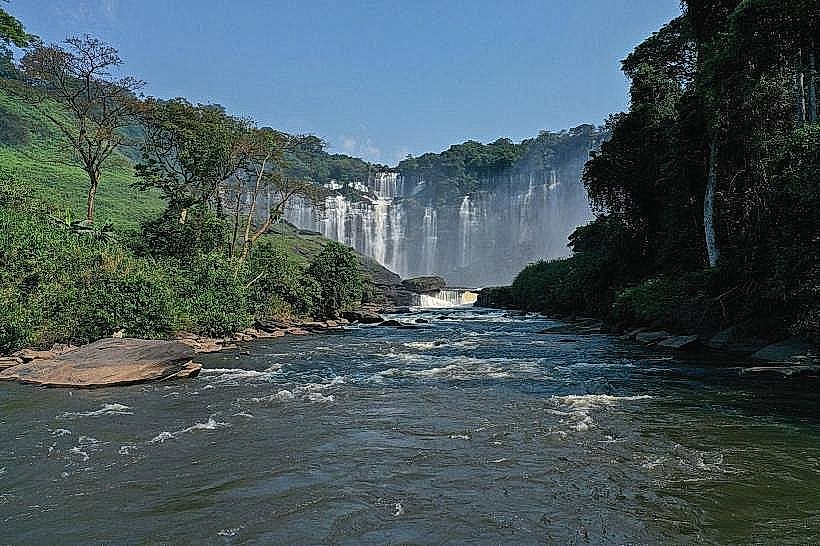Information
Landmark: Cangandala National ParkCity: Malanje
Country: Angola
Continent: Africa
Cangandala National Park, Malanje, Angola, Africa
Overview
Cangandala National Park sits in Angola’s north-central Malanje Province, just outside the quiet town of Cangandala where dusty roads cut through tall, sunlit grass, moreover though it’s Angola’s tiniest national park, it plays a vital role in protecting the giant sable antelope (Hippotragus niger variani)-a rare, jet-black species found nowhere else and a proud emblem of the nation’s wildlife conservation.The park protects stretches of savanna and quiet woodlands, offering a rich setting for studying biodiversity, spotting wildlife under acacia shade, and exploring eco-tourism, simultaneously the park sprawls across about 600 square kilometers of softly rolling savanna, dotted with miombo woodlands, wide grasslands, and slender streams that glint in the sun.In a way, The ground stretches out mostly flat, broken here and there by rough stone ridges and low hills that rise just enough to give you a clear view across the land, subsequently seasonal rivers and quick-running streams spill into green patches, forming crucial havens where plants and animals thrive.On the open savanna, visitors can spot wildlife with ease-an antelope flicking its ears beneath wide, endless skies and the shadow of far-off forests lining the horizon, as well as cangandala National Park’s landscape bursts with the grasses and scattered acacia trees typical of the Angolan savanna.Wide stretches of grassland cover the open plains, while miombo woodlands-thick with Brachystegia and Julbernardia trees-cast cool shade across the ground, also along the shifting seasonal streams, the park shelters wildflowers, shrubs, and river plants, their leaves brushing the water’s edge.These varied habitats teem with life-bees buzzing over wildflowers, birds darting between branches, and slight mammals rustling through the grass, and cangandala’s Fauna and Conservation area is best known for its giant sable antelopes-Angola’s proud national emblem and among the rarest on Earth, their gloomy coats catching the sun like polished wood.You’ll spot bushbucks, reedbucks, duikers, and warthogs, along with birds like hornbills, eagles, and weavers fluttering through the trees, in conjunction with reptiles and amphibians turn up too, slipping through the reeds to make the most of the brief, shimmering wetlands.The park’s conservation work centers on tracking endangered animals, restoring their habitats, and stopping poachers-sometimes you can spot a ranger’s dusty boots by a freshly repaired fence line, along with at Cangandala National Park, visitors can join guided tours, wander along shaded walking trails, or bump across the savanna on a game drive.Out on the open savanna, you can spot wildlife at its best-gazelles grazing in the cool dawn or lions stretching in the fading afternoon light, when everything stirs to life, not only that birdwatching feels especially rewarding here, where woodlands and winding streams shelter a dazzling mix of species-a flash of red wings, a quick trill from the reeds.The park wraps you in quiet, unspoiled calm-just the rustle of leaves and a bird’s call-making it a perfect escape for nature lovers, photographers, and researchers alike, after that for generations, people have lived around Cangandala, tending miniature fields and herding cattle across the dry grasslands in the same traditional ways their ancestors did.Local knowledge plays a key role in conservation, especially when it comes to how native species behave and where they make their homes-like the rustle of a rare bird nesting deep in the reeds, after that the park helps teach people about the environment and reminds visitors why protecting Angola’s rare wildlife matters-like keeping its brilliant red-crested turacos harmless among the tall trees.Not surprisingly, Cangandala National Park may be slight, but it’s alive with purpose-a area where Angola’s giant sable antelope graze under tall, golden grasses, offering a glimpse of the country’s fragile savanna at work, consequently blending wildlife conservation, sweeping landscapes, and a quiet sense of isolation, it draws eco-tourists, researchers, and anyone eager to experience Angola’s wild heart.
Author: Tourist Landmarks
Date: 2025-11-20



